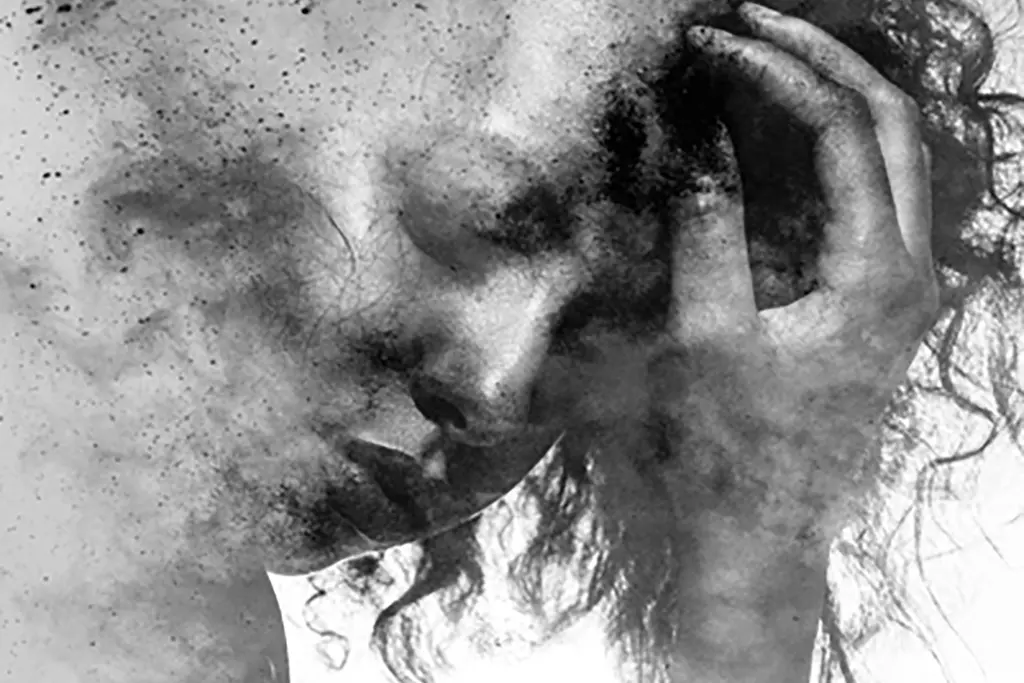
Imade Nibokun, 37, has had depressive episodes since childhood. But she reached a crisis point in December 2012 as a graduate student at the University of Southern California.
“It had gotten to the point that it was a struggle to get out of bed and go to class,” she says. “I had trouble bathing and putting on appropriate clothes. I would go to my lectures in unwashed, wrinkled sweatpants. I found just having a conversation with others exhausting.”
Once thoughts of suicide began, Nibokun decided she needed to take action. But she was shocked at the response once she finally made it to the student health center.
“I was told that if I wanted to get help, I would need to drop out of my graduate program, and they would have police escort me to the hospital,” Nibokun says. “I was horrified. As a Black woman, I didn’t feel safe entering a police car, especially when I was in such a weak and vulnerable state.”
Thankfully, she felt strong enough to advocate for herself and convince staff that she needed counseling instead of hospitalization. Still, it took almost 10 years to get her symptoms under control.
“The best way to describe how I felt was deflated,” Nibokun says. “I had no sense of self or self-esteem. I cried a lot and rarely felt happiness. It felt like there was no way to live.”
Learning to Live with Major Depressive Disorder
Also known as clinical depression, major depressive disorder (MDD) is a mood disorder that makes it harder to do daily activities like eat, sleep, or work, says Krista Jordan, PhD, a psychotherapist in Austin, Texas.
Once you’ve had one bout of depression, you’re more vulnerable to others.
“I tell patients that they may have to manage it every day for the rest of their life, just like they would high blood pressure, or type 2 diabetes,” Jordan says. “Once you’ve had more than three episodes, it’s highly likely that it will be with you forever. But you can manage it and prevent full-blown episodes.”
Jordan herself has had six major depressive episodes. She remembers her first symptoms at age 8, when her parents divorced.
“I felt sad, numbed out, and sluggish,” she says. “I spent a lot of time in my room and kept to myself, and it got better on its own.”
But when it returned at age 15, her grades dropped and she became suicidal. She started talk therapy, which helped somewhat. Jordan would go on to have four more episodes: one at age 19, one at 22, one at 30, and most recently at age 34 after the birth of her first child.
“I think once I reached my 30s, I realized that my depression wouldn’t magically go away, and it was always something I’d have to live with,” she says. “I could either stick my head in the sand, or I could take accountability for it and do everything in my power to manage it as best as I could.”
Recognizing Symptoms of Major Depressive Disorder
One key to managing MDD is being able to know the symptoms. Look for the following warning signs:
You feel persistently sad, anxious, or just “empty.” These feelings may get in the way of being able to do daily activities. Heather Loeb, 40, a mental health advocate in Corpus Christi, Texas, says her depression was so severe six years ago that she wasn’t able to get out of bed in the mornings to care for her children, then 4 and 2. “I would try to get them ready for school, but all I could do was cry,” she says. “Most days, my husband would have to do it.”
Loss of interest. “One of the warning signs of depression for me is when I start to isolate,” Loeb says. “I stop wanting to leave the house or to see friends.”
Changes in sleeping or eating patterns. You may find it hard to fall and stay asleep. On the flip side, you may find that you need to sleep more. “Whenever I am depressed, I tend to feel very low-energy and want to sleep a lot,” Jordan says. You may notice that you overeat and gain weight or lose all interest in eating.
Self-harm. At her lowest points, Loeb would cut herself. “After I gave birth to my two children, I had severe postpartum depression where I felt such anguish, I cut myself in the hopes that it would release some of the emotional pain.”
Physical aches and pains. These can be headaches or stomach pain that doesn’t go away but also doesn’t seem to have a clear medical cause. Sometimes, it may seem even more serious. “If I’m in the middle of an intense depressive episode, I get chest pain,” Nibokun says. “I feel so much tension in my body, it’s almost like something is buzzing against my skin.”
It’s normal to have some of these symptoms if you’re going through a rough patch such as a death in the family, job loss, or divorce. But if most of these symptoms last for more than two weeks, get professional help. If you have thoughts of suicide, tell your doctor or therapist right away. Or call or text the Suicide & Crisis Lifeline at 988.
Making Peace with Major Depressive Disorder
Jordan says the two best ways to manage MDD are through medication and talk therapy. It may take a bit of trial and error to find a therapist you are comfortable with.
“Therapists are like hairdressers: a good one is hard to find,” she says. “When you find one who ‘gets’ you, stick to them like glue.”
Sometimes, therapy is enough. But if you don’t notice improvement after a few weeks, or if your symptoms go away and then return, you may want to consider medication.
“Many people shy away from [medications], but when they are combined with talk therapy, they can make a real difference,” Jordan says.
It may take several tries before you find one that works for you. A 2021 study in the Journal of Clinical Psychiatry found that about 30% of people who try medications have drug-resistant depression. That means they don’t respond to multiple treatments. Loeb says she didn’t feel better until she tried electroconvulsive therapy (ECT). That’s when an electric current is used to trigger a seizure in the brain while you’re under anesthesia or asleep. It’s thought to change brain chemistry and can quickly improve symptoms in some people.
Nibokun says esketamine (Spravato), a prescription nasal spray approved for treatment-resistant depression, helped her. Esketamine comes from the anesthetic ketamine. It works by boosting glutamate levels in the brain, which can ease depressive symptoms within hours.
Lifestyle also plays a role. Exercise in particular can help. A 2024 British Medical Journal review of several studies found that walking, jogging, yoga, and strength training were among the most effective.
“I also recommend swimming, since it helps to regulate breathing, which is important for mood,” Jordan says.
Part of coming to peace with your MDD is also being prepared for setbacks and knowing what to do. In September 2024, Loeb noticed feelings of sadness and a desire to isolate.
“I forced myself to exercise, eat right, and see friends and my therapist, even when I had no desire to do any of it,” Loeb says.
It also helps to be honest with others. Loeb tried to explain her depression in an age-appropriate way to her children, now ages 10 and 8, as much as possible.
“I told them that I felt sadder than usual, and I might need to lie down more to rest,” she says.
She’s much more open with her struggles than she was 10 years ago.
“Major depressive disorder is nothing to be ashamed of. It’s just another chronic health condition like diabetes. I’ll have it for life.”
Show Sources
Photo Credit: Suzana Topita / Getty Images
SOURCES:
Imade Nibokun, 37, mental health advocate, Greensboro, North Carolina.
Krista Jordan, PhD, psychotherapist, Austin, Texas.
Heather Loeb, 40, mental health advocate, Corpus Christi, Texas.
National Institute of Mental Health: “Major Depression.”
Journal of Clinical Psychiatry: “The Prevalence and National Burden of Treatment-Resistant Depression and Major Depressive Disorder in the United States.”
UpToDate: “Patient Education: Depression Treatment Options for Adults (Beyond the Basics).”
British Medical Journal: “Effect of Exercise for Depression: Systematic Review and Network Meta-Analysis of Randomised Controlled Trials.”
